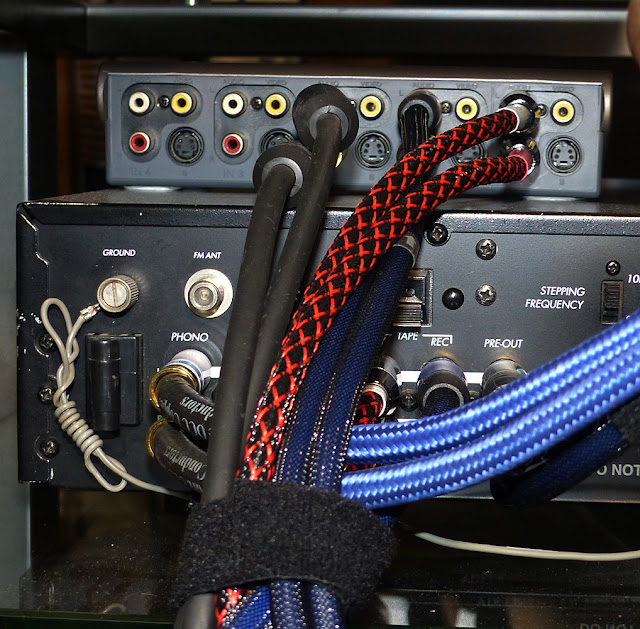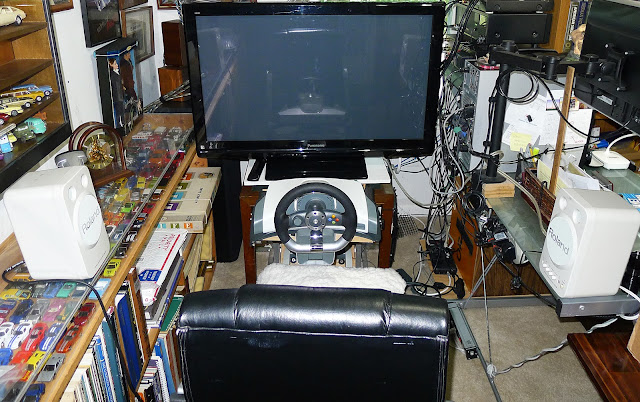August 17, 2019
#322
Gentle reader,
There were two main "Noise Reduction" systems developed to reduce tape hiss in conventional analog music sources.
Dolby developed theirs exclusively for tape recordings. I don't know if it was available on 8-Track tapes, but cassette tapes, most definitely.
NOTE: If you are viewing this on a computer, clicking on any picture will open a second window over this one. You click through or use your right and left arrow keys to look at the photos. They will be larger than seen here. If you are viewing it on a device such as a phone or tablet, I do not know if that works the same way.
NOTE: If you are viewing this on a computer, clicking on any picture will open a second window over this one. You click through or use your right and left arrow keys to look at the photos. They will be larger than seen here. If you are viewing it on a device such as a phone or tablet, I do not know if that works the same way.
DBX, or "dbx" as they chose their system's logo to be in lower case, does it differently than the several versions of Dolby. I won't go into how it works, there are sites and articles from people far more knowledgeable than I that you can read.
dbx, went one further by encoding LP records. It's quite ingenious, they record the music about 1/2 as loud as normal, and somehow encoded their signal in the music grooves.
So, if you play a dbx encoded record without a decoder, it sound's much quieter that you would expect.
But, if you have a dbx decoder, and turn it on, not only is the music much louder, the soundstage is taller, wider, deeper and one feels as if they are in the space WITH the musicians.
Above is a scan from a Digital dbx LP I just received. It succinctly explains the process and it's results.
Above is a scan from a Digital dbx LP I just received. It succinctly explains the process and it's results.
Techmoan - YouTube
That is a link to a British chap who buys electronics, usually old technology, and does very in depth videos about them. He's wonderfully informative and enjoyable to watch and learn from. I watched his video on dbx and got inspired.
I had a dbx decoder some years ago, but do not remember the results. Here are photos of it:
It was fairly small and simple, I had it in late 2015 and sold it. This one was made from 1982-1986 and sold new for $160.
Keep in mind the size based upon the RCA terminals which are a standard 3/4" spacing, and compare the back to the one below.
Photographing shiny metal is very challenging. And the RCA terminals on this model are horizontal, but clearly it is larger.
This one, a dbx II model 122 and it's four channel brother, were made from 1976-1980 and sold new for $275. The four channel model was much more expensive.
I like it's design, especially the solid walnut wooden end panels. Normally, I open up electronics just to see what's inside. But this time, I left it alone.
I was able to buy it for the bargain price of $20. The seller assured me that it worked the last time he used it, but it had been stored for many years since.
Fortunately, HiFi Engine - Owners and Service Manuals had the owner's manual for free download. Because this one is much more complicated than the NX-40 I am glad I downloaded and printed it.
There was no room in my system to add this other than to the right of the turntable.
I have a 7" TV attached to my OPPO universal player, which I use to make sure SACD and DVD-Audio discs play in stereo not surround sound. It has a tripod socket on the bottom for some reason and does not stand up otherwise. So, I adapted it to that piece of wood. Previously, the wood was perpendicular to the TV.
I searched through all of the classical and Jazz LPs and so far have found only three dbx encoded records, shown here. That is perhaps 60% of my LPs so I may find others.
Because my 1990's Dynaco PAT-6 preamp/tuner has fewer inputs than I need, I use this SONY A/V switch which works perfectly and silently to playback cassette tapes and my CD Recorder. Below shows how it was configured before installing the dbx.
Below is with the dbx II installed. As you can see, I believe better quality cables are a good investment and DO sound better.
To keep track of which way the signal would be going, I wrapped fiberglass electrical tape about the cables I was adding to the system for the dbx. I did not want to get them mixed up.
Before committing to use the dbx II, I simply hooked it up with the red cables. Above and below shows it in the system permanently.
The cables with the arrows I drew on them are one meter long, so I had to curl them one rotation to make them fit neatly. Double-sided Velcro, what a wonderful invention!
I snaked the thin brown AC cord from the dbx II around one of the cross braces and plugged it into the last free outlet in one of my Adcom ACE-515 power conditioners.
Here it is playing the record featured at the top of the article. Here are the other two I have but have not yet played.
I generally prefer classical music later than the baroque era as well as Mozart, Handel, etc. With exceptions, of course. But I did buy all three because of the dbx sticker even though I did not have a decoder.
The one below, is the same one as at the top of the article.
As far as the Strauss family, I tend to not buy their music because so much of it was written for waltzes and is not exciting to listen to. However, the second side is a great tune.
So, what do I think of dbx? I, like Techmoan, was pleasantly blown away. I switched the "BYP" button on and off, and yes, the music is quieter by far, with the decoder off.
But, like he said in the video, the music is so much more alive and airy. The soundstage is huge, closing my eyes I can see in my mind's eye where various instruments are located. I can hear musician's breathing.
I could go on and on with descriptions of my experience just playing this one LP. But, I won't. Suffice to say, I am so impressed that I went online and ordered several dbx encoded LP records!
Two arrived today and I continue to revel in their incredible range! So, I just bought some others. Too bad few record labels were willing to buy into dbx.
Prices are all over the place for them because there were so few made. I'm retired and on a fixed income, so I had to be choosy.
Adding this dbx decoder, and it's very informative manual, to the system has encouraged me to play more records. So, it was $20 well spent.
Thank you for taking the time to read my humble words and viewing my images. It is your kind words and comments that keep me coming out with new articles.
Scott
August 17, 2019
#322
Because my 1990's Dynaco PAT-6 preamp/tuner has fewer inputs than I need, I use this SONY A/V switch which works perfectly and silently to playback cassette tapes and my CD Recorder. Below shows how it was configured before installing the dbx.
Below is with the dbx II installed. As you can see, I believe better quality cables are a good investment and DO sound better.
To keep track of which way the signal would be going, I wrapped fiberglass electrical tape about the cables I was adding to the system for the dbx. I did not want to get them mixed up.
Before committing to use the dbx II, I simply hooked it up with the red cables. Above and below shows it in the system permanently.
The cables with the arrows I drew on them are one meter long, so I had to curl them one rotation to make them fit neatly. Double-sided Velcro, what a wonderful invention!
I snaked the thin brown AC cord from the dbx II around one of the cross braces and plugged it into the last free outlet in one of my Adcom ACE-515 power conditioners.
Here it is playing the record featured at the top of the article. Here are the other two I have but have not yet played.
I generally prefer classical music later than the baroque era as well as Mozart, Handel, etc. With exceptions, of course. But I did buy all three because of the dbx sticker even though I did not have a decoder.
The one below, is the same one as at the top of the article.
As far as the Strauss family, I tend to not buy their music because so much of it was written for waltzes and is not exciting to listen to. However, the second side is a great tune.
So, what do I think of dbx? I, like Techmoan, was pleasantly blown away. I switched the "BYP" button on and off, and yes, the music is quieter by far, with the decoder off.
But, like he said in the video, the music is so much more alive and airy. The soundstage is huge, closing my eyes I can see in my mind's eye where various instruments are located. I can hear musician's breathing.
I could go on and on with descriptions of my experience just playing this one LP. But, I won't. Suffice to say, I am so impressed that I went online and ordered several dbx encoded LP records!
Two arrived today and I continue to revel in their incredible range! So, I just bought some others. Too bad few record labels were willing to buy into dbx.
Prices are all over the place for them because there were so few made. I'm retired and on a fixed income, so I had to be choosy.
Adding this dbx decoder, and it's very informative manual, to the system has encouraged me to play more records. So, it was $20 well spent.
Thank you for taking the time to read my humble words and viewing my images. It is your kind words and comments that keep me coming out with new articles.
Scott
August 17, 2019
#322






























































